In my mind the notion of going to Labrador has always been a
lot like going to Alaska, as a place completely remote and sub-arctic. Of
course, Labrador is not as far north as Alaska but is in some ways even less
accessible. For example, there are fewer than 50,000 people in the region
compared to Alaska’s 600,000.
Between Baie-Comeau and Labrador City I traveled north about
4* of latitude from 49* to a little over 53*, not really that far north in the
scheme of things. In Europe that’s going from Paris to Manchester. In the western
part of North America from the U.S.-Canada border to Edmonton. Neither of
those, though, give any kind of similar sense of going from temperate latitudes
to the sub-arctic. And sub-arctic it is! In early June there’s still mounds of
snow around in Labrador and many of the lakes are still mostly frozen over. It
blows my mind!
Arriving in Newfoundland (& Labrador) province, I have
now made it to all ten Canadian provinces, although I have yet to make it to
Nunavut and Northwest Territories. It’s fitting to be last because Newfoundland
& Labrador was Canada’s last province, British territory until after WWII
when the empire was collapsing and the Newfies chose to become part of Canada.
When I was a child I thought it was a different country than Canada because I
had a big metal globe, apparently a quite old one, on which Newfoundland and
Labrador were a different color (and therefore a different country) than
Canada.
When I first started contemplating a trip to Newfoundland
well over a decade ago, I thought the routes back and forth would both be by
ferry via Sydney, Nova Scotia. It was only in 2010 that the Trans-Labrador
Highway was completed between Goose Bay and the coast. Prior to that there was
only a ferry connecting Goose Bay, deep inland on a fjordlike inlet with
Cartwright farther east along the coast and the Labrador coastal road. When I
learned about the completion around 2011, a grand circle tour via the Trans-Labrador
Highway seemed like the best option with the trip through Labrador a serious
wilderness adventure.
There’s likely virtually no one who would willingly choose
to live in the interior of Labrador without a good reason. There don’t even
seem to be any indigenous communities in the interior similar to the Athabaskans
native to the boreal forests farther west. There are some places where the snow
is just too deep most of the year to consider living unless you can hunt sea
creatures like the Inuit.
Labrador City and neighboring Wabush, two towns with
a combined population of several thousand owe their existence to iron mining.
A small town with no tourists but big iron mines nearby is
one where the very limited accommodations cater to business travelers on
expense accounts. I was due for a night of car camping, but the forecast was
for an unusually chilly 25*F low temperature. Ouch! I have the gear to handle such temps but
usually prefer not to sleep outside under about 40*F. The motels I checked
looked quite swanky for my needs and quoted me prices beyond the range I
usually consider. Looks like it’s going to be a very cold night beside one of
those icy lakes!
According to my guidebook, the they completed paving the
road between Labrador City/Wabush and Goose Bay/Happy Valley in 2014. Maybe
that’s why it’s still so good.
Seriously, though, I’d expect the roads in a region with some spots of
permafrost to be buckled with post holes and frost heaves.
Traveling hundreds of miles between towns I can’t help but
think about the enormity of Canada and just how absolutely useless much of the
land in the far north is to humans. Its only value comes from the rivers which can
be used to produce hydropower and from the mineral wealth underneath it.
On my full day of driving through boreal forest, iced over
lakes, and barren rocky land there was only one town in nearly 400 miles.
Churchill Falls exists solely because of a major hydro power project in which a
river has been diverted from its normal bed underground through a power plant.
I can only imagine what kind of an engineering marvel it must be. The town
consists of cookie cutter houses and one major three-story building which houses
offices, a hotel, a grocery store, and a restaurant where I ate my lunch, a
complete company town.

 Labrador City, Newfoundland and Labrador, Canada
Labrador City, Newfoundland and Labrador, Canada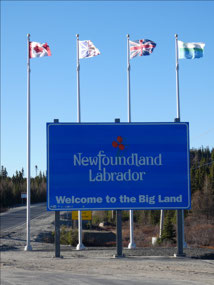
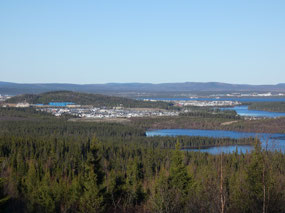
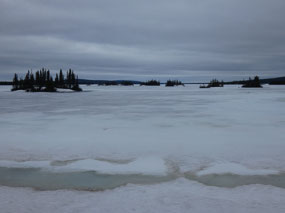


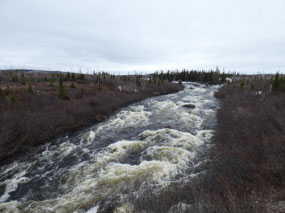
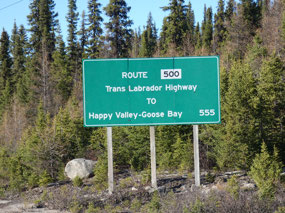
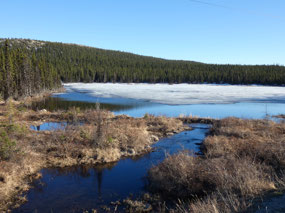
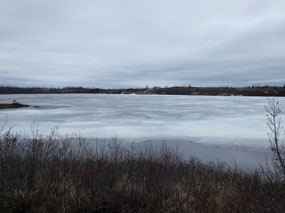
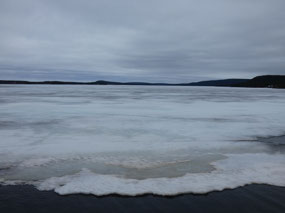
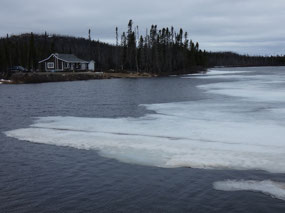
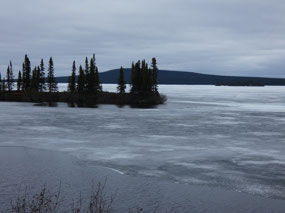
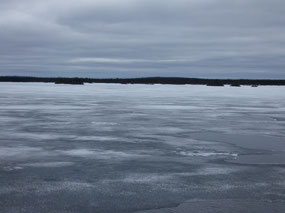
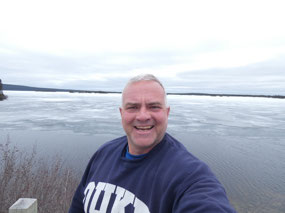
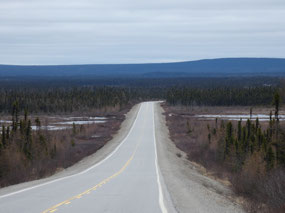
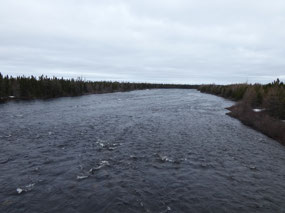
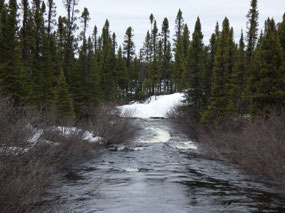
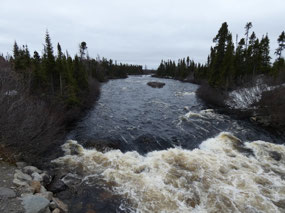
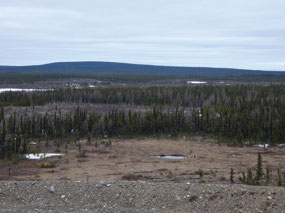
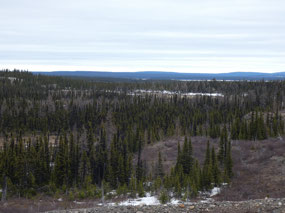
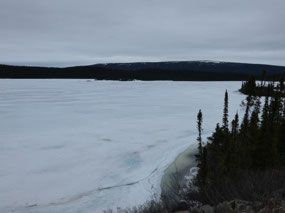
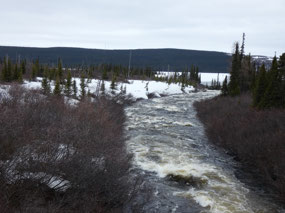
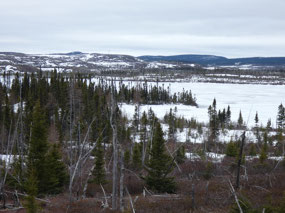

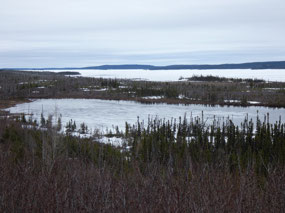
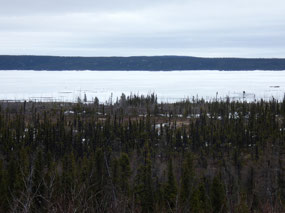
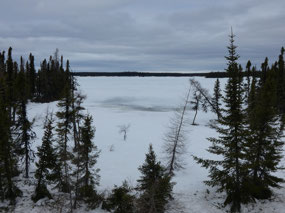
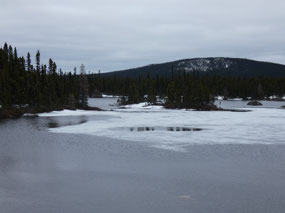
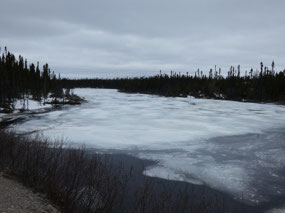
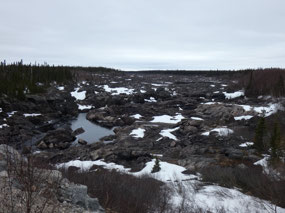
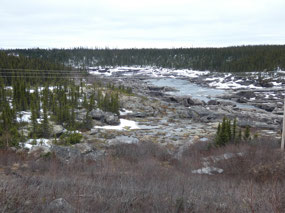
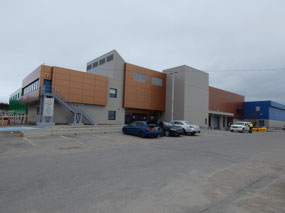
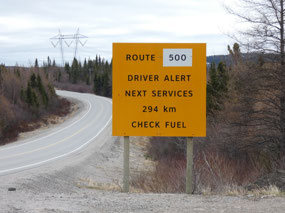
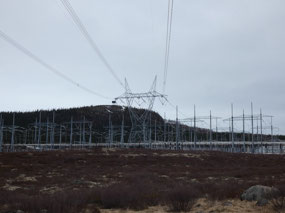
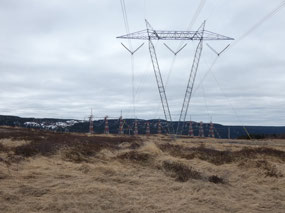
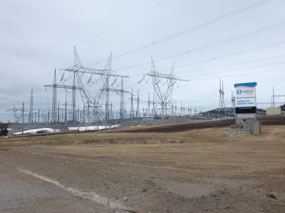
2025-05-23